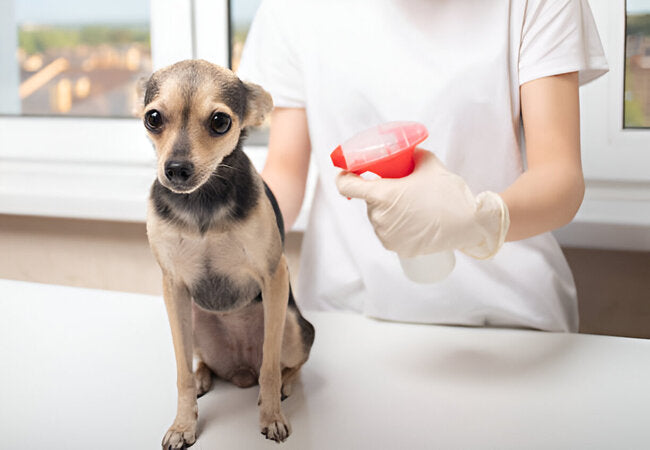2025 Vet Guide: How to Get Flies Off Your Dog – Prevention, Care & Safe Repellents 🐶🚫

In this article
2025 Vet Guide: How to Get Flies Off Your Dog – Prevention, Care & Safe Repellents 🐶🚫
By Dr. Duncan Houston BVSc
Flies aren’t just annoying—they can bite, transmit disease, and cause infections, especially around ears, wounds, or urine areas. Protecting your pup requires a multi‑layered approach. 🛡️
🔍 1. Clean Living: The First Line of Defence
- Keep your home and yard free from waste and leftover food; flies are attracted to trash, pet urine, and spilled food.
- Immediately clean bowls, carpets, floors, and yard areas after eating or potty breaks to remove attractants.
- Bathtub-bathe your dog regularly during fly season to reduce body odors and residues.
🌳 2. Yard Maintenance
- Trim grass, remove debris and fallen food; stagnant piles encourage fly breeding.
- Provide screened outdoor spaces or take your dog inside during peak fly activity.
- Dispose of dog feces and urine spots promptly—these are common hotspots.
🧴 3. Repellents & Safe Sprays
- Use pet-safe sprays (e.g., SWAT®) or cedar oil; avoid DEET or products with overlapping mosquito/flea ingredients.
- DIY spray with diluted apple cider vinegar or essential oils like cedar, lavender, rosemary or citrus—vet‑approved and gentle.
- Apply protective salves or harnesses soaked in permethrin *only* as per expert guidance—keep pets and humans safe.
- “Permethrin-treated harness and cedar oil on ears and bum work well,” shared one camping owner :
- > “Cedar oil or most oils are very safe. Put on the ears, bum, etc. Plus a harness that's soaked and dried in permethrin.”
👕 4. Protective Gear & Surroundings
- Use lightweight canine “bug shirts” or head nets to guard sensitive areas during peak fly season.
- Set up screened canopies or shaded areas outdoors.
- Consider fly traps or fans near resting spots to deter flies.
⚠️ 5. Monitor for Fly Bites & Infections
- Check ears, underbelly, face and wounds for bites—look for redness, swelling or crusting.
- Signs like scabs or bullseye lesions may indicate black fly bites, which can be painful and itchy.
- If wound appears infected (pus, swelling, itchiness), seek veterinary care—antibiotics might be necessary.
🏡 6. Smart Cleaning & Prevention Hacks
- Try the “shiny coin water bag” trick hung near patios—flies avoid the reflected light (scientific evidence is limited, but harmless to try).
- Plant fly‑repelling herbs like lavender, rosemary, basil and bay leaves around the yard.
📱 7. Tools for Owners & Vets
- Ask A Vet: 24/7 guidance on bite care, infection signs, and proper repellent use.
- Woopf: Log bite sites, products used, environmental patterns, and vet visits.
- Purrz: Monitor fly activity triggers, treatment success, and skin healing trends.
📚 Frequently Asked Questions
Q: Can I feed something to repel flies?
No evidence supports oral repellents for flies; focus on hygiene and topical/screening methods.
Q: Are essential oils safe on dogs?
Yes, in low dilution and vet‑approved types (cedar, lavender, rosemary). Avoid direct application of undiluted oils.
Q: When are fly-bite wounds dangerous?
Seek veterinary care if wounds show redness, swelling, pus, or if your dog is licking/scratching them persistently.
💬 Owner Insight
> “Natural Chemistry flea/tick spray helped so much on his belly—black flies were killing him!”
🏁 Final Thoughts from Dr Houston
Flies are more than a nuisance—they can bite and carry bacteria, leading to painful wounds or infection. Prioritize a clean environment, safe repellents, protective gear, and monitoring for signs of injury. With the help of Ask A Vet, Woopf, and Purrz, you’ll equip your dog with comprehensive protection into 2025 and beyond. 💙🐾
Download the Ask A Vet app for expert bite-care advice, repellent guidance, and recovery tracking. 📱
AskAVet.com – Keeping your pup safe from pests.


